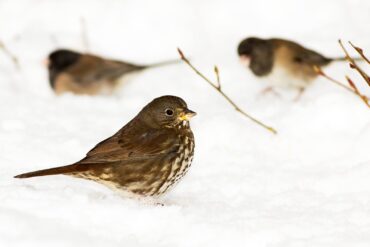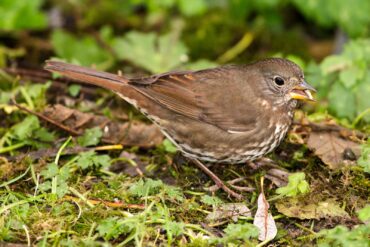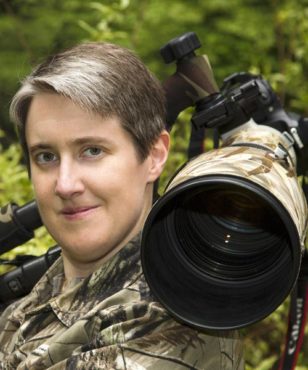
Abbreviations abound in the world of birds. Species names are simplified with four-letter alpha codes for taking faster field notes and long names have shorter nicknames. The lingo causes confusion among even experienced birders, let alone beginners.
Then there are the hard-to-discern birds with similarities in appearance and behavior. Some of these invariably land in a less than scientific category known as “LBB,” or “little brown bird.”
LBBs are songbirds predominantly brown in color that often stump beginning birders and curious nonbirders. Included in the LBB group are multiple species of wrens, creepers, sparrows and finches. Most birders, at some point, have been asked to identify a “little brown bird.”
An LBB of West Sound that regularly confuses people is the fox sparrow. Upon first glance, you can easily mistake it for a smaller song sparrow or a larger spotted towhee as it scratches through leaf litter looking for insects, spiders and seeds.
You can find fox sparrows throughout much of the United States and Canada. Most breed in Canada and Alaska, while others breed in mountainous areas of the West. Birds that breed in Canada spend the nonbreeding season in the southeastern United States. Pacific Northwest breeders head to coastal areas in winter, including West Sound. They can be found year-round along the coast of British Columbia.
Fox sparrows begin to arrive in West Sound in September and are usually gone by May. They are fairly common from late fall to early spring. As quiet, unassuming birds, they arrive and leave without much fanfare. Fox sparrows occasionally give contact calls but seldom sing until they reach their breeding grounds. They typically spend the winter months on their own or in small groups.
There are four main subspecies of fox sparrows: red, sooty, slate-colored and thick-billed. Birds that winter in West Sound are typically “sooty” fox sparrows, which are dark brown, sometimes reddish, with numerous chevron-shaped spots on a white chest and belly. They have a yellow mandible (lower bill), which is a helpful field mark to look for when sorting through LBBs on dark days.
The fox sparrow prefers woodland habitat with dense, shrubby thickets. A shy bird, it can easily go unnoticed as it inconspicuously forages in the shadows of the underbrush, its brown plumage serving as camouflage against fallen leaves.

The fox sparrow searches beneath bushes for seeds, berries and invertebrates. It scratches through the leaf litter with a trademark two-footed “leap-kick.” By jumping up and kicking leaves and other debris behind itself, the fox sparrow hopes to expose something tasty to eat.
A bird’s behavior, such as the way it scratches the ground, can assist in making an identification when multiple LBBs are present. Fox sparrows often feed alongside other ground-feeding sparrows, such as spotted towhees, song sparrows and dark-eyed juncos. The spotted towhee does a similar leap-kick but is larger and males are black with orange flanks.
Also, when a fox sparrow kicks away the forest debris, it does so with a little more enthusiasm than a spotted towhee. Other sparrows, such as the song sparrow and dark-eyed junco, tend to scratch in leaf litter more daintily.
Fox sparrows frequently visit backyards with appropriate habitat. Leaving the yard a little messy is a helpful way to attract them. Rake leaves off the lawn but allow some to stay around the perimeter.
Scatter millet seed for the birds to eat at the edge of a shrubby or wooded area. This also provides a better opportunity to view them closer.
Within hours of arriving at their breeding grounds, fox sparrows stake their claim to a territory of about two acres. They are paired up by the end of the week.
Nesting preferences differ from coast to coast. In the East, fox sparrows prefer to nest in shrubs under conifers. In the West, any dense shrub is an adequate site for a nest, which may be tucked inside the bush or on the ground beneath it.
The female spends up to three days building a nest of various plant materials. She incubates a brood of two to four eggs for 12-14 days.
The female is the primary provider for the nestlings, while the male occasionally brings them food. After just 10 days, the young are ready to leave the nest. Parents continue caring for them for three more weeks.
Populations are currently stable but according to the North American Breeding Bird Survey, their overall numbers have declined by about 50 percent since 1966. Fox sparrows thrive where native vegetation flourishes.
Backyards and neighborhood greenspaces provide a winter home for the reticent fox sparrow. Not particularly flashy, this ordinary little, brown bird quietly goes about its business, with no worries. Watching one offers a respite from our troubled world.



























